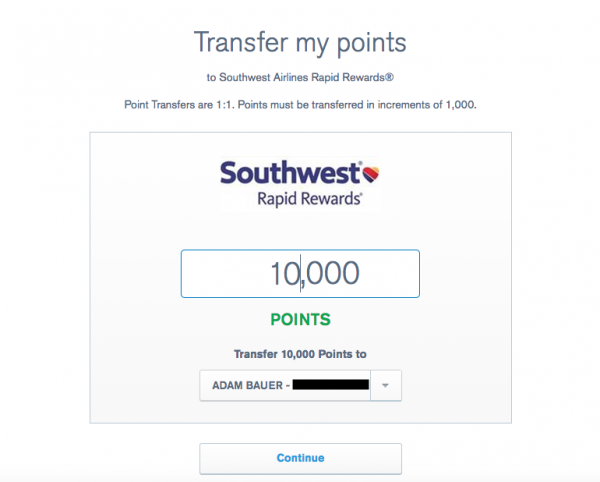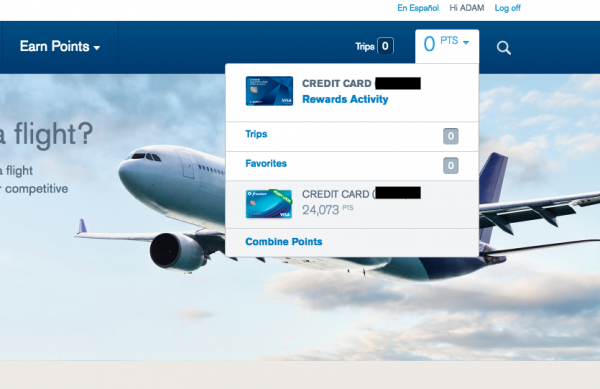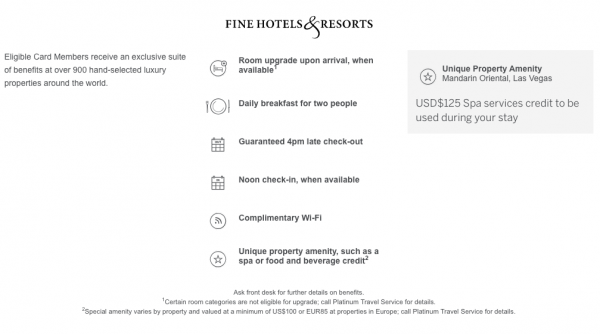Understanding the varied options for earning and spending points with two of the most popular bank rewards systems is crucial for maximizing your travel dollars. In this guide, I’ll cover some of the essentials of Chase’s Ultimate Rewards and American Express Membership Points.
Earning Points
For both, the main way to acquire points is by using one of the bank-branded credit cards. Co-branded cards, which are cards serviced by the bank but reward points that are specific to a retailer, will typically not earn UR or AMEX points. For example, having the Hyatt card, which is serviced by Chase, only earns World of Hyatt points which are directly deposited into your Hyatt account.
Every card will have different bonuses for spending. Some are a flat rate, like the 1.5x of the Chase Freedom Unlimited, but some vary based on the category, like the AMEX Everyday, which rewards at a 2x rate for grocery spending. Obviously, it’s important to know what cards reward in which ways to use them efficiently.
Ultimate Rewards also allows for bonus points if you shop through the UR portal. Out of the now 160 online retailers available, you can find bonus points of 2x – 7x. I was in the market for a new pair of kicks, so I checked to see if my retailer of choice was available. Luckily, it was. I earned 7pts/$1 on the transaction. This, again, is one our key drivers of accumulating points- being opportunistic.
A Closer Look at Ultimate Rewards
Cards including the Sapphires, Freedoms, and Inks all earn UR points at various rates based on different categories. I won’t be analyzing different cards and their value in this guide. I’ll do that in future reviews.
You can use your UR points in a variety of ways. I’m a fan of flexibility, so while I have yet to use them in this manner, I still like having the option of getting cash back, of which UR offers in the form of a statement credit or deposit into a Chase checking or savings account. The value is 1 cent per point.
You can also use your points by booking through the UR portal. You can buy plane tickets, hotel stays, and select “experiences” with any combination of points and cash. It’s here where value starts to unlock thanks to the premier cards like the Chase Sapphire Preferred (CSP) and Reserve (CSR). When booking through the UR portal using CSP, each point is worth 1.25 cents. For CSR, it’s 1.50 cents. This is well above the standard 1 cent per point redemption with the other Chase cards. It may not seem like much, but an extra 25-50% can go a long way. A drawback of using the UR portal is that hotel reservations usually do not count as direct bookings, so you may not earn loyalty points or stay credits.
A real value play for both UR and Amex Membership points is the ability to transfer to travel partners. UR travel partners include British Airways, Flying Blue, Southwest, United, Hyatt, IHG, Marriott, and more.
Some travel partners have fixed point redemption options based on certain tier rooms or flights, so you can save a substantial amount of money or points by transferring directly. Be sure to check direct and through the portal before making a final purchase. Additionally, because many of the transfers are done online and are immediate, it’s best to wait until you’re ready to book given that all point transfers are final. Transfers can be made in 1000 point increments.

This is another option that is unlocked by the CSP and CSR cards. Neither the Freedom nor Ink cards provide the opportunity to transfer to partners. Some may balk at the high annual fees of the CSP ($95) and CSR ($450), but beyond the card specific benefits they offer, they can also elevate the value of other Chase cards in your wallet.
In the UR system, every card has its own profile which stores the points earned on that specific card. You can transfer points between profiles. A common strategy is to have multiple Chase cards working in tandem based on the purchase. Some may pair the CSP and the Freedom Unlimited, using the CSP for travel and restaurant spending, earning double points for those, while using the Freedom Unlimited for every other purchase, netting 1.5 points per dollar on everything else. Then, if looking to transfer to a travel partner or book at the accelerated rate through the portal, simply transferring the Freedom Unlimited points earned to the CSP profile. Another popular pairing is the basic Freedom card which earns a flat 1 point per dollar on all purchases, with the exception of featured quarterly bonus categories which earn 5 points per dollar. Some have all three, knowing that they’ll earn, at a minimum, 1.5 points per dollar on every purchase.

Transfering between profiles and partners is quick, easy, and doesn’t mean we are stretching our spend, which is a strategy I can get behind. Unlike the 1000 point increment limitation with transfer partners, you can move any number of points between your profiles. You can also transfer UR points to another person in your household. They have to share your address and you’ll need their account number to do so, but it’s worth considering if a partner is short on points for a purchase.
A Closer Look at Amex Membership
Naturally, some the rules and benefits of Amex Membership (AM), mirror those of UR. Certain cards earn AM points. Those include the Everyday cards, Platinum cards, and Premier Gold cards.
You can use your points by shopping through the portal at select retailers or by buying gift cards. Both options are also available in UR but, as with AM, they don’t give you much bang for your buck. Of course, you can use your points to book travel through the AM portal, but it is surprisingly not the best value. You’ll get about 1 cent per point on airfare, but less, around 0.75 – 0.85 cents per point on hotel bookings. I would shy away from booking hotels through AM for this reason. One exception to this is the Business Platinum Card, which offers a point rebate on AM Travel bookings. This is one area in which I feel AM lags compared to UR.
The true value play with AM points is to transfer them to one of the many travel partners. One notable difference is that with UR points, to my knowledge, all points transfer at a 1:1 basis. AM point transfer rates vary based on the specific partner. This is certainly something to look out for before making a transfer. The transfer rate will be made clear before making the transaction.
The breadth of partners with AM trumps that of UR. However, one significant drawback is that when transferring points from AM to domestic airline partners, Amex will charge an excise fee. The cost, currently, is 60 cents per 1000 points transferred. You can pay with cash or points. I’m not sure of any other program that does this. Direct partners include Flying Blue (KLM/Air France), Delta, Emirates, Jet Blue, British Airways, Choice Hotels, Hilton, and SPG.
As with UR, additional benefits unlock with a premier card, in this case, the Amex Platinum. Friend of the show, Bill, had a great rundown of benefits he enjoys. As with CSP and CSR, there are benefits specific to Amex Platinum, but it also grants access to Amex’s Fine Hotels and Resorts Program.
Fine Hotels and Resorts is essentially an Amex specific booking engine for luxury hotel partners. Perks of booking through FHR includes daily breakfast for two during the stay duration, a room upgrade when available, early check-in and check-out, and a property amenity credit which is routinely valued around $100. Some see FHR as a yawn-inducing bonus, but I know quite a few who find it to be of great value.

The Platinum card also grants additional bonus points at a clip of 5x when booking through Amex Travel in addition to automatic elite status with SPG, Hilton, and National Car Rental, all of which give company specific perks.
My goal is to drive home the point that a key to maximizing your travel budget is simply knowing what options are available to you. For many cards, especially premier travel cards, the bonus earn on spending may actually be an afterthought. It’s how those cards interact with their native reward system where we unlock the real value. But we have to know what’s there. I hope I was able to illuminate some options for you. Now, when choosing your next card, it may be helpful to analyze each platform to find which one better rewards you for how you currently spend and how you want to travel in the future.
As always, let me know if there is something you think should be added or an area in which you find value that I may have overlooked. I enjoy your feedback!











Add comment